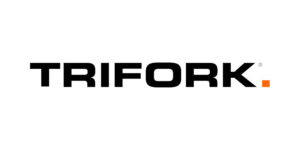Fra JP Morgan:

Electric cars: the 1% solution
Af Michael Cembalest, Chairman of Market and Investment Strategy“A dream is a wish your heart makes” – Cinderella
There’s a lot of excitement about new electric car models coming to market. However, analysts and green energy advocates have been way too optimistic about the adoption rate of electric vehicles. Around a decade ago, most forecasts penciled in electric car penetration of 4% to 12% by the year 2020, both in the US and on a global basis. As of 2015, the US and global penetration rate of electric vehicles was still less than 1%. So, I’m taking the latest round of forecasts (e.g., Bloomberg New Energy Finance: 35% penetration by 2040) with a giant grain of salt.
This pattern of over-optimism also applies to renewable energy more broadly. As shown in the next chart, the percentage of US primary energy derived from renewable sources is still just 10% (3/4 of which is hydropower and biomass), considerably lower than well-known prior forecasts (Note b). The transition to a renewable energy future is inevitable, but the time it’s going to take to get there is often wildly underestimated. Prior energy transitions involving coal, oil and natural gas took decades, and there’s no reason to think that the next transition will be different, particularly given intermittency of wind and solar power. On a global basis, despite heavy investment in wind and solar power, the share of fossil fuels in primary energy consumption barely declined from 87% in 2000 to 86% in 2015.

There are important implications for investors here. A longer and more complex journey to a renewable energy future entails more risk than many investors appreciate. The final chart shows how, despite a collapse in the oil and gas sectors, two notable renewable energy indices have trailed both the S&P energy sector (comprised mostly of oil & gas stocks), and the broad equity market as well. Renewable energy stocks generally entail a lot of hype and hyperbole per unit of return.
There are also lessons here about energy wishes vs reality for the front-runner for the US Presidency. At the 2nd debate, Secretary Clinton talked about the US now being energy-independent and no longer reliant on the Middle East. As I wrote in the October 18th Eye on the Market, neither assertion is true: the US still imports 8 million barrels a day of oil (around the same amount the US produces), and the share of imported oil from the Persian Gulf is roughly unchanged since the 1990s. If anything, US energy independence is now falling, not rising: in the first half of 2016, US crude oil imports rose vs 2015 by 500k barrels a day, most of which came from OPEC countries (rising imports from Canada were offset by reduced imports from Mexico). Let’s hope the Secretary is on firmer ground with respect to her policy proposals that imply 60 percent annual growth in distributed solar capacity by 2020.

Notes
(a) Parts of this week’s commentary were drawn from our 2016 annual energy paper, overseen by Vaclav Smil at the University of Manitoba. In the first chart, “electric cars” include electric-only vehicles like the Tesla and plug-in hybrid vehicles (PHEV: electric motor recharged with an external electricity supply; an internal combustion engine is typically used to recharge the electric battery rather than to power the car).
(b) Google announced a Clean Energy plan in 2008 to reduce electricity generation from fossil fuels by 88% by the year 2030. In 2011, Google abandoned the plan, and in 2014 its engineers wrote an assessment as to what they got wrong. Their piece was entitled “Today’s renewable energy technologies won’t save us. So what will?”









